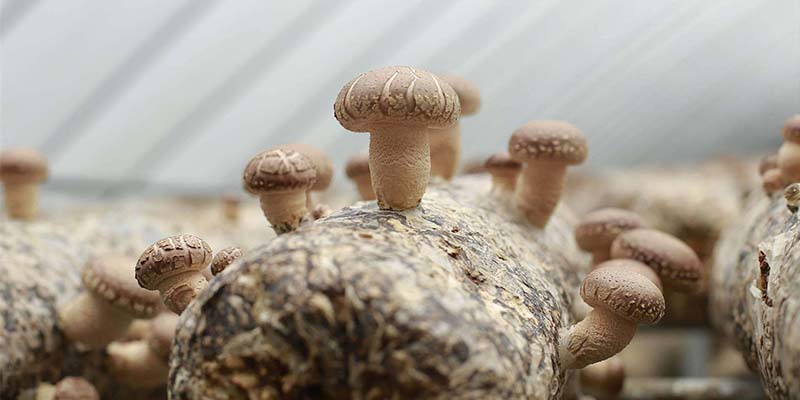2023-03-07 10:27:03
Mushroom fruiting management in mid-to-late spring

In the mid-to-late spring season from mid-March to April, the temperature changes from low to high, and the rainfall increases and the humidity increases. At the same time, the mushroom sticks go through fruiting in autumn, winter and early spring, and the nutrient consumption is relatively large. The resistance of mycelium becomes weaker, and it is easy to be infected by diseases, pests and miscellaneous bacteria. At this stage, the key points of shiitake mushroom fruiting management are shading and temperature control, protecting the mushroom sticks, and using weather conditions to extend the fruiting period as much as possible and strive for more mushrooms.
1. Shading and temperature control. Gradually thicken the shading, cover the outside of the shed film with sunshade nets in time, especially do a good job of shading the southeast and west sides of the mushroom shed to avoid direct sunlight and reduce the temperature inside the shed. Since there is no direct sunlight on the north side of the mushroom shed, shade can be appropriately reduced to increase ventilation. As the temperature rises, except for the budding stage, the film around the mushroom shed can be gradually lifted until only the sunshade net remains, which can increase the ventilation in the shed, reduce the temperature of the shed, and create temperature conditions suitable for the growth of shiitake mushrooms.
2. Dehumidification and ventilation. The film around the mushroom shed is raised, and the film at both ends is pulled up. These are measures for ventilation and moisture removal. The management of mushroom production in the middle and late spring seasons should be dry. Generally, water is not sprayed. Water is only sprayed when the mushroom shed or mushroom sticks are too dry. The shade of the mushroom shed has a lot of moldy and miscellaneous bacteria, and the rain will bring the miscellaneous bacteria into the shed. Therefore, the mushroom sticks should be protected from rain, and rain protection must be done in thunderstorm days.
3. Bacteria cultivation and hydration to stimulate buds. After the mushrooms are harvested, the mushroom sticks should be kept dry for about 7 days, and the temperature of the shed should be adjusted to 18°C-25°C, so that the hyphae in the mushroom sticks can recover, accumulate nutrients again, and fully nourish the bacteria. The hyphae in the depressions left by the harvested mushrooms grow white, the sticks harden again, and the hand becomes elastic before entering the management of water replenishment and budding of the next tide mushrooms. In mid-to-late spring, early replenishment should be carried out when the temperature is above 12°C and when the temperature is above 12°C. In the later stage, when the temperature rises, you should seize the "cold head and warm tail" before the cold air comes, and carry out when the temperature is below 20°C. After the mushroom sticks have been fruited many times, the dry matter gradually decreases, and the weight after replenishing water should be gradually reduced. Do not replenish water too much, and the hyphae will die due to lack of oxygen, causing the mushroom sticks to rot.
NEWS

(1)(1).jpg)
 CONTACT
CONTACT